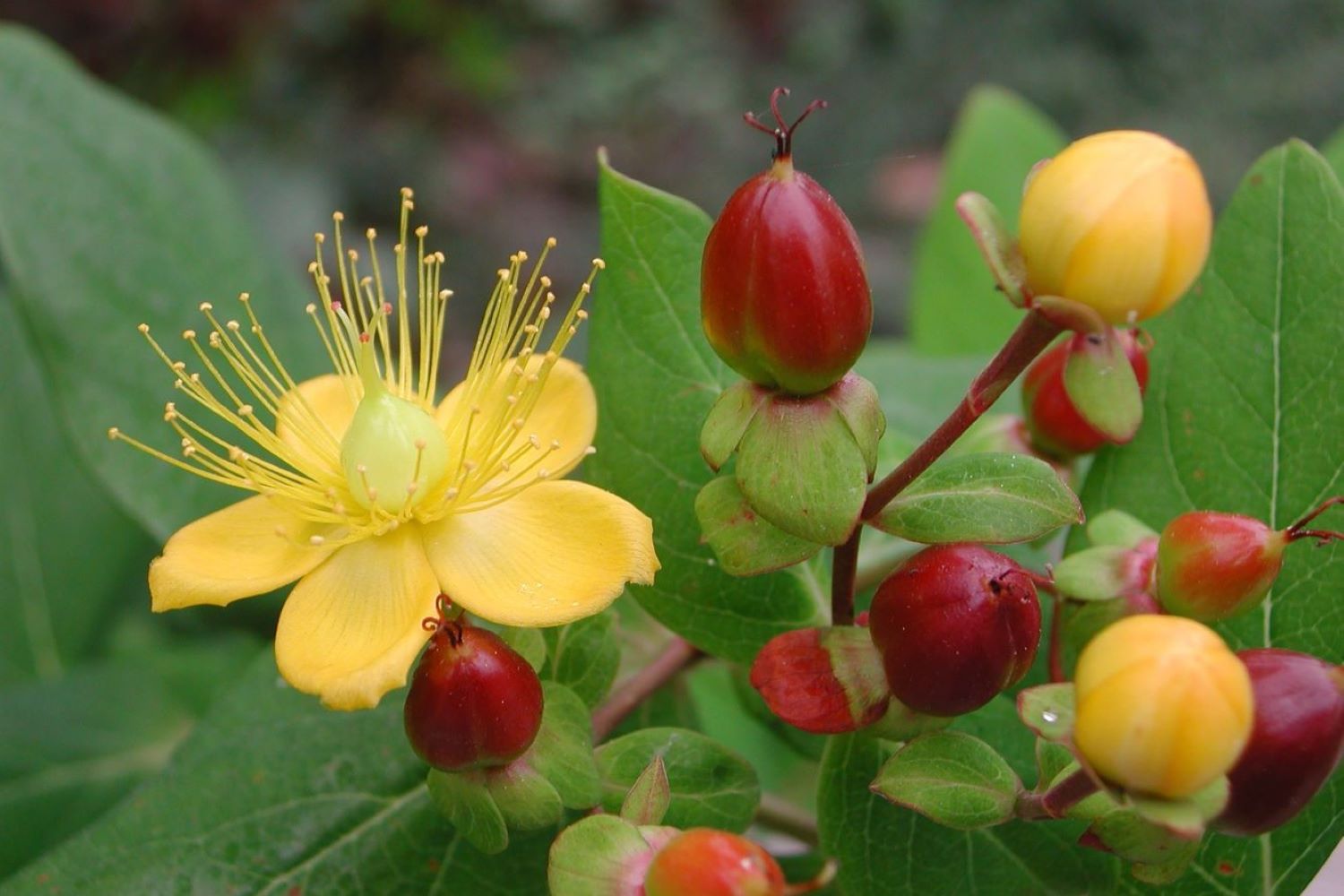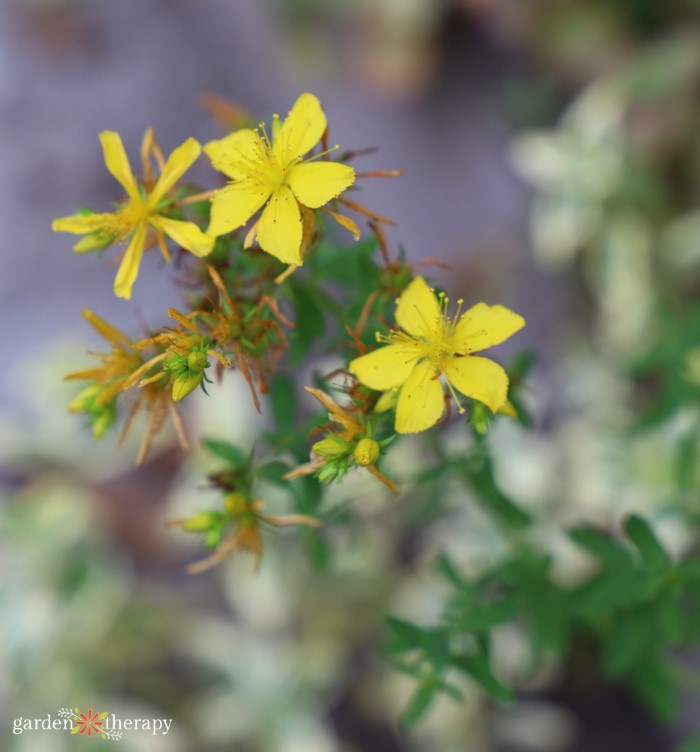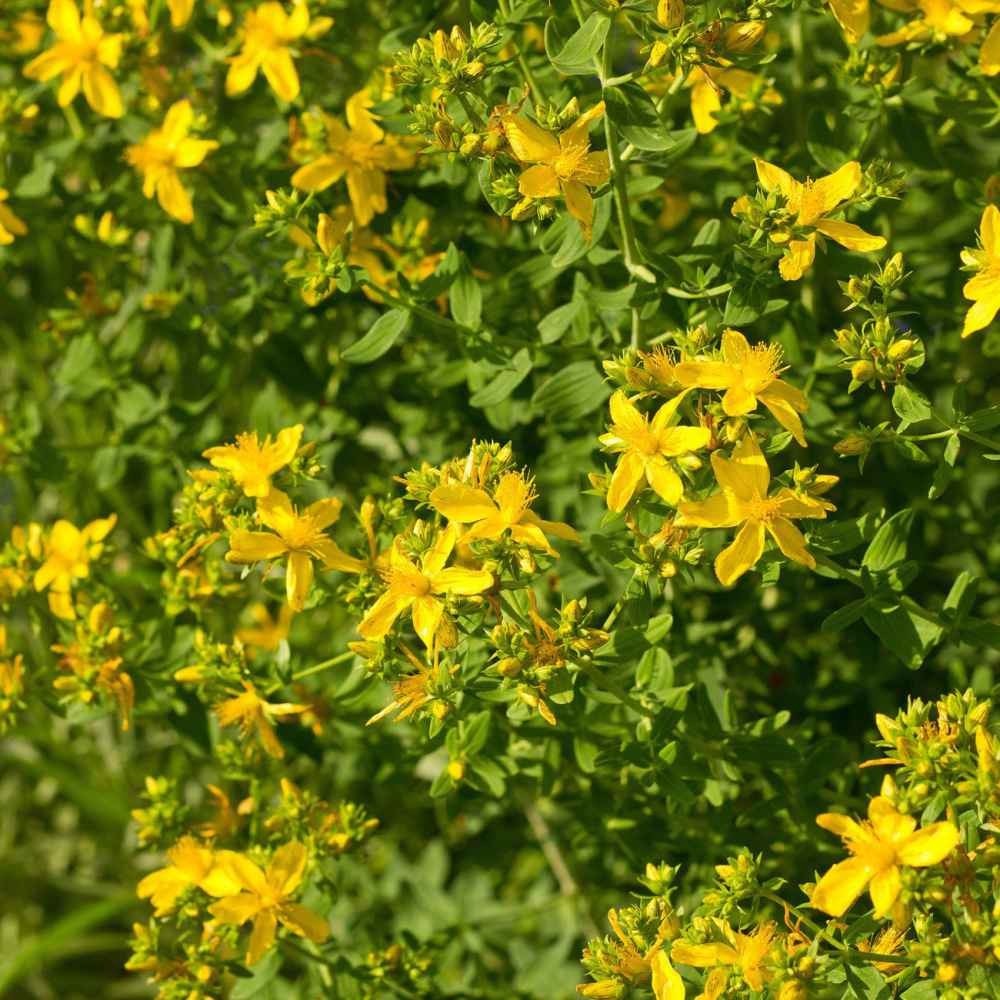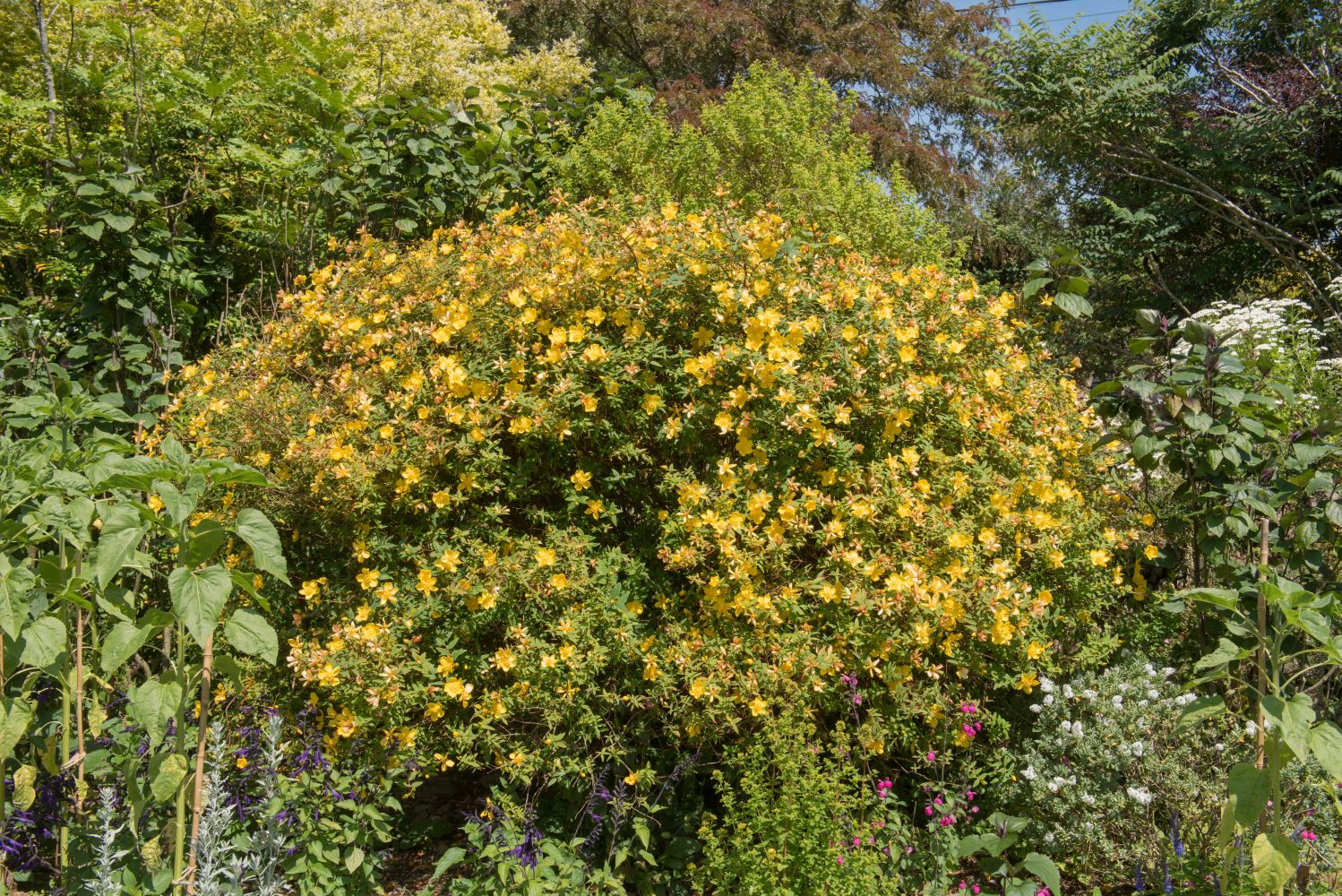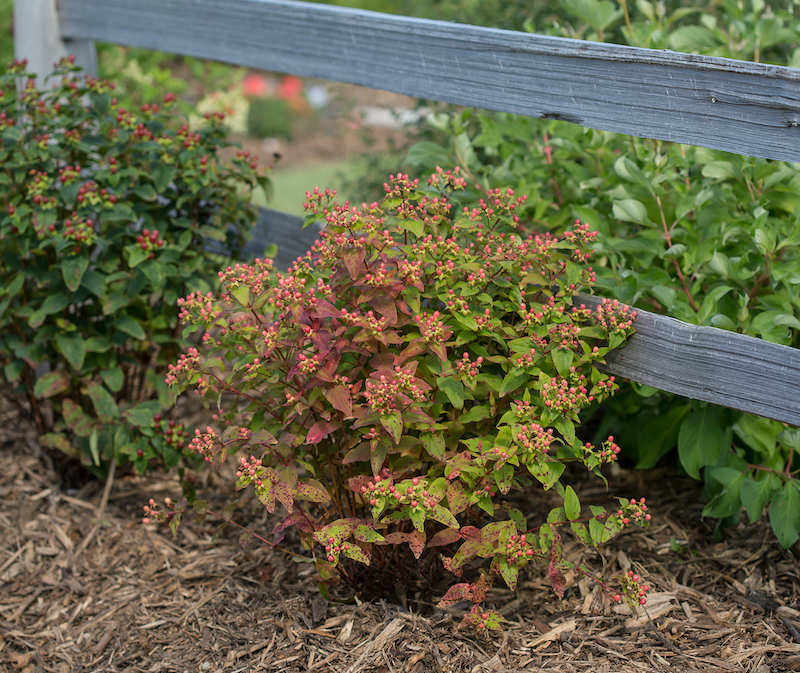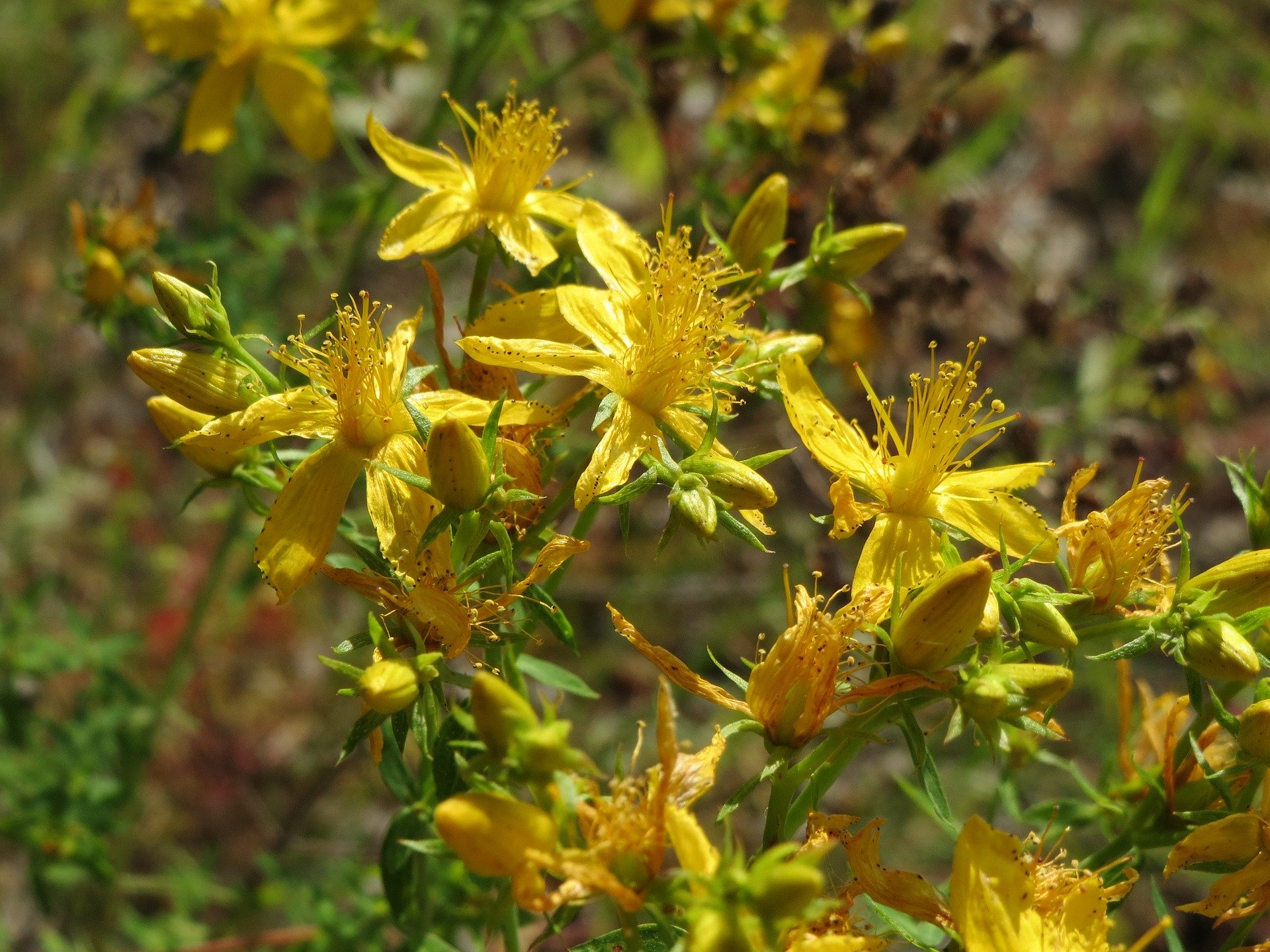Why Choose St John’s Wort as a Ground Cover
St John’s Wort ground cover is a popular choice among gardeners and landscapers due to its numerous benefits. This low-maintenance, drought-tolerant ground cover is perfect for creating a beautiful and sustainable lawn. With its attractive yellow flowers and ability to thrive in a variety of conditions, St John’s Wort ground cover is an excellent option for those looking to add some color and texture to their outdoor space.
One of the primary advantages of St John’s Wort ground cover is its ease of growth. This ground cover can thrive in a range of soil types and pH levels, making it an ideal choice for gardens with poor soil quality. Additionally, St John’s Wort ground cover requires minimal watering and fertilization, reducing the need for frequent maintenance.
St John’s Wort ground cover is also an excellent choice for those looking to create a sustainable lawn. This ground cover is highly resistant to pests and diseases, reducing the need for chemical pesticides and fungicides. Furthermore, St John’s Wort ground cover has a deep root system, which helps to prevent soil erosion and retain moisture in the soil.
In addition to its practical benefits, St John’s Wort ground cover is also a beautiful addition to any garden or landscape. Its bright yellow flowers bloom in the summer months, attracting pollinators and adding a pop of color to the outdoor space. With its attractive foliage and vibrant flowers, St John’s Wort ground cover is an excellent choice for those looking to add some visual interest to their garden or landscape.
Overall, St John’s Wort ground cover is an excellent choice for those looking to create a beautiful and sustainable lawn. With its ease of growth, drought tolerance, and attractive flowers, this ground cover is perfect for gardeners and landscapers of all skill levels. Whether you’re looking to add some color and texture to your outdoor space or create a low-maintenance lawn, St John’s Wort ground cover is an excellent option to consider.
How to Plant and Care for St John’s Wort Ground Cover
Planting and caring for St John’s Wort ground cover is a relatively straightforward process. To ensure optimal growth and health, follow these steps:
Soil Preparation: Before planting St John’s Wort ground cover, prepare the soil by loosening it to a depth of 8-10 inches. Remove any debris, rocks, or weeds, and mix in a 2-inch layer of compost or well-rotted manure. This will help improve soil fertility and drainage.
Planting: Plant St John’s Wort ground cover in the spring or fall, when the weather is cooler. Space the plants 12-18 inches apart, depending on the desired level of coverage. Water the plants thoroughly after planting, and keep the soil consistently moist during the first growing season.
Watering: St John’s Wort ground cover is drought-tolerant, but it will perform best with regular watering. Water the plants deeply once or twice a week, depending on weather conditions. Avoid overwatering, which can lead to root rot and other problems.
Fertilization: Feed St John’s Wort ground cover with a balanced fertilizer in the spring, following the manufacturer’s instructions. Avoid overfertilizing, which can damage the plants and the environment.
Maintenance: St John’s Wort ground cover requires minimal maintenance. Remove any dead or damaged plants, and trim back the stems in the spring to maintain shape and promote new growth. Divide and replant the ground cover every 3-4 years to maintain its vigor and prevent it from becoming too dense.
By following these steps, you can enjoy a beautiful and thriving St John’s Wort ground cover that will provide years of enjoyment and low-maintenance beauty to your landscape.
Some additional tips to keep in mind when planting and caring for St John’s Wort ground cover include:
Avoid planting St John’s Wort ground cover in areas with standing water or where water tends to collect. This can lead to root rot and other problems.
St John’s Wort ground cover can be invasive in some areas, so be sure to check with local authorities before planting it in your area.
St John’s Wort ground cover can be used as a companion plant to help repel pests and improve soil health.
Benefits of Using St John’s Wort as a Ground Cover
St John’s Wort ground cover offers numerous benefits that make it an attractive option for gardeners and landscapers. One of the primary advantages of using St John’s Wort as a ground cover is its ability to suppress weeds. By forming a dense mat of foliage, St John’s Wort ground cover prevents weeds from germinating and growing, reducing the need for herbicides and other weed control methods.
Another benefit of using St John’s Wort as a ground cover is its ability to reduce erosion. The roots of the plant help to hold the soil in place, preventing it from washing away in heavy rainfall or irrigation. This makes St John’s Wort ground cover an excellent option for slopes, hillsides, and other areas prone to erosion.
St John’s Wort ground cover is also a valuable resource for pollinators. The plant’s bright yellow flowers are rich in nectar and pollen, attracting bees, butterflies, and other beneficial insects to the garden. This makes St John’s Wort ground cover an excellent option for gardeners looking to create a pollinator-friendly garden.
In addition to its practical benefits, St John’s Wort ground cover is also a versatile option that can thrive in a variety of landscapes and climates. It can be used in cottage gardens, rock gardens, woodland gardens, and other types of landscapes, making it an excellent option for gardeners with diverse tastes and preferences.
St John’s Wort ground cover is also a low-maintenance option that requires minimal care and upkeep. It can tolerate drought, heat, and cold, making it an excellent option for gardeners who want to create a beautiful and sustainable landscape with minimal fuss.
Overall, St John’s Wort ground cover is an excellent option for gardeners and landscapers looking to create a beautiful and sustainable landscape. Its ability to suppress weeds, reduce erosion, and attract pollinators make it a valuable resource for gardeners, while its low-maintenance requirements and versatility make it an excellent option for gardeners with diverse tastes and preferences.
St John’s Wort vs Other Ground Covers: A Comparison
When it comes to choosing a ground cover, there are many options available. Two popular alternatives to St John’s Wort ground cover are creeping thyme and vinca minor. While all three options have their benefits, they also have some key differences.
Creeping thyme is a low-growing, spreading ground cover that is ideal for areas with poor soil. It is drought-tolerant and requires minimal maintenance, making it a great option for busy gardeners. However, it can be slow to establish and may require more frequent watering than St John’s Wort ground cover.
Vinca minor, on the other hand, is a fast-growing, evergreen ground cover that is ideal for areas with shade. It is highly adaptable and can thrive in a variety of soil types, but it can be invasive in some areas and may require more frequent pruning to keep it under control.
In comparison, St John’s Wort ground cover is a mid-growing, spreading ground cover that is ideal for areas with full sun to partial shade. It is drought-tolerant and requires minimal maintenance, making it a great option for busy gardeners. It is also less invasive than vinca minor and can thrive in a variety of soil types.
When it comes to aesthetic appeal, all three options have their own unique benefits. Creeping thyme has tiny, fragrant flowers that bloom in the summer, while vinca minor has blue-purple flowers that bloom in the spring. St John’s Wort ground cover, on the other hand, has bright yellow flowers that bloom in the summer.
Ultimately, the choice between St John’s Wort ground cover, creeping thyme, and vinca minor will depend on your specific needs and preferences. If you’re looking for a low-maintenance, drought-tolerant option with bright yellow flowers, St John’s Wort ground cover may be the best choice. However, if you’re looking for a fast-growing, evergreen option with blue-purple flowers, vinca minor may be a better option.
It’s also worth noting that St John’s Wort ground cover can be used in combination with other ground covers to create a unique and interesting landscape. For example, you could pair St John’s Wort ground cover with creeping thyme to create a beautiful, fragrant landscape that is perfect for areas with poor soil.
Using St John’s Wort in Different Landscaping Designs
St John’s Wort ground cover is a versatile and adaptable plant that can be used in a variety of landscaping designs. Its attractive yellow flowers and low-maintenance requirements make it an ideal choice for gardeners and landscapers looking to create a beautiful and sustainable landscape.
One popular way to use St John’s Wort ground cover is in cottage gardens. Cottage gardens are designed to be informal and charming, with a mix of flowers, shrubs, and trees. St John’s Wort ground cover can be used to fill in gaps between plants and create a cohesive look. Its yellow flowers will also attract pollinators and add a pop of color to the garden.
Rock gardens are another great place to use St John’s Wort ground cover. Rock gardens are designed to be low-maintenance and drought-tolerant, making St John’s Wort ground cover a perfect fit. Its ability to thrive in poor soil and withstand drought makes it an ideal choice for rock gardens.
Woodland gardens are also a great place to use St John’s Wort ground cover. Woodland gardens are designed to mimic the natural environment of a forest, with a mix of trees, shrubs, and perennials. St John’s Wort ground cover can be used to create a naturalized look and attract wildlife to the garden.
In addition to these specific landscaping designs, St John’s Wort ground cover can also be used in a variety of other ways. It can be used as a border plant, a filler plant, or even as a lawn substitute. Its versatility and adaptability make it an ideal choice for gardeners and landscapers looking to create a unique and beautiful landscape.
When using St John’s Wort ground cover in landscaping designs, it’s also important to consider its growth habits and maintenance requirements. St John’s Wort ground cover can spread quickly, so it’s important to provide it with enough space to grow. It also requires minimal maintenance, but may need to be pruned back occasionally to keep it under control.
Overall, St John’s Wort ground cover is a versatile and adaptable plant that can be used in a variety of landscaping designs. Its attractive yellow flowers and low-maintenance requirements make it an ideal choice for gardeners and landscapers looking to create a beautiful and sustainable landscape.
Common Problems and Solutions for St John’s Wort Ground Cover
While St John’s Wort ground cover is a relatively low-maintenance option, there are some common problems that may arise when growing it. In this section, we’ll discuss some of the most common issues and provide solutions and advice on how to troubleshoot them.
Pests: One common problem that may arise when growing St John’s Wort ground cover is pests. Aphids, whiteflies, and spider mites are all common pests that can infest St John’s Wort ground cover. To control these pests, use neem oil or insecticidal soap. These products are gentle on the environment and can be used to control a wide range of pests.
Diseases: Another common problem that may arise when growing St John’s Wort ground cover is diseases. Root rot, leaf spot, and powdery mildew are all common diseases that can affect St John’s Wort ground cover. To prevent these diseases, make sure to provide good air circulation and avoid overwatering. If you do notice any signs of disease, treat the affected area with a fungicide.
Nutrient Deficiencies: St John’s Wort ground cover may also be susceptible to nutrient deficiencies, particularly nitrogen and iron deficiencies. To prevent these deficiencies, use a balanced fertilizer that contains nitrogen, phosphorus, and potassium. You can also add iron supplements to the soil to prevent iron deficiencies.
Overgrowth: St John’s Wort ground cover can be prone to overgrowth, particularly if it is not pruned regularly. To prevent overgrowth, prune the plant back regularly to maintain its shape and size. You can also use a trellis or other support system to keep the plant upright and prevent it from sprawling.
Soil Erosion: St John’s Wort ground cover can also be susceptible to soil erosion, particularly if it is grown on a slope or in an area with heavy rainfall. To prevent soil erosion, use a mulch or other ground cover to hold the soil in place. You can also use a retaining wall or other support system to prevent soil erosion.
By following these tips and solutions, you can help prevent common problems that may arise when growing St John’s Wort ground cover. With proper care and maintenance, St John’s Wort ground cover can be a beautiful and low-maintenance addition to any landscape.
St John’s Wort Ground Cover: A Sustainable Option
St John’s Wort ground cover is not only a beautiful and low-maintenance option for landscaping, but it is also a sustainable choice. This ground cover has several environmental benefits that make it an attractive option for gardeners and landscapers looking to reduce their environmental impact.
One of the primary environmental benefits of St John’s Wort ground cover is its ability to reduce water consumption. This ground cover is drought-tolerant and requires minimal watering, making it an ideal choice for areas with low rainfall or water restrictions. By using St John’s Wort ground cover, gardeners and landscapers can reduce their water consumption and help conserve this valuable resource.
Another environmental benefit of St John’s Wort ground cover is its ability to minimize chemical use. This ground cover is resistant to pests and diseases, reducing the need for pesticides and fungicides. Additionally, St John’s Wort ground cover can help suppress weeds, reducing the need for herbicides. By using St John’s Wort ground cover, gardeners and landscapers can reduce their chemical use and help create a healthier environment.
St John’s Wort ground cover also supports biodiversity by providing a habitat for beneficial insects and animals. This ground cover attracts pollinators, such as bees and butterflies, and provides a food source for birds and other wildlife. By using St John’s Wort ground cover, gardeners and landscapers can help support local ecosystems and promote biodiversity.
In addition to its environmental benefits, St John’s Wort ground cover is also a sustainable option because it is a perennial plant. This means that it will come back year after year, reducing the need for frequent replanting and minimizing waste. By using St John’s Wort ground cover, gardeners and landscapers can create a sustainable and low-maintenance landscape that will last for years to come.
Overall, St John’s Wort ground cover is a sustainable option for landscaping that offers several environmental benefits. Its ability to reduce water consumption, minimize chemical use, and support biodiversity make it an attractive choice for gardeners and landscapers looking to reduce their environmental impact. By using St John’s Wort ground cover, gardeners and landscapers can create a beautiful and sustainable landscape that will last for years to come.
Conclusion: Why St John’s Wort Ground Cover is a Great Choice
St John’s Wort ground cover is a versatile and low-maintenance option for landscaping that offers a range of benefits. Its ease of growth, attractive yellow flowers, and ability to suppress weeds and reduce erosion make it an ideal choice for gardeners and landscapers looking to create a beautiful and sustainable landscape.
In addition to its practical benefits, St John’s Wort ground cover is also a sustainable option that can help reduce water consumption, minimize chemical use, and support biodiversity. Its ability to thrive in a variety of landscapes and climates makes it a great choice for gardeners and landscapers looking to create a unique and beautiful landscape.
Whether you’re looking to create a cottage garden, rock garden, or woodland garden, St John’s Wort ground cover is a great option to consider. Its versatility and low-maintenance requirements make it an ideal choice for gardeners and landscapers of all skill levels.
In conclusion, St John’s Wort ground cover is a great choice for gardeners and landscapers looking to create a beautiful and sustainable landscape. Its ease of growth, attractive flowers, and low-maintenance requirements make it an ideal option for a range of landscaping needs. Consider using St John’s Wort ground cover in your next landscaping project to create a unique and beautiful landscape that will last for years to come.


